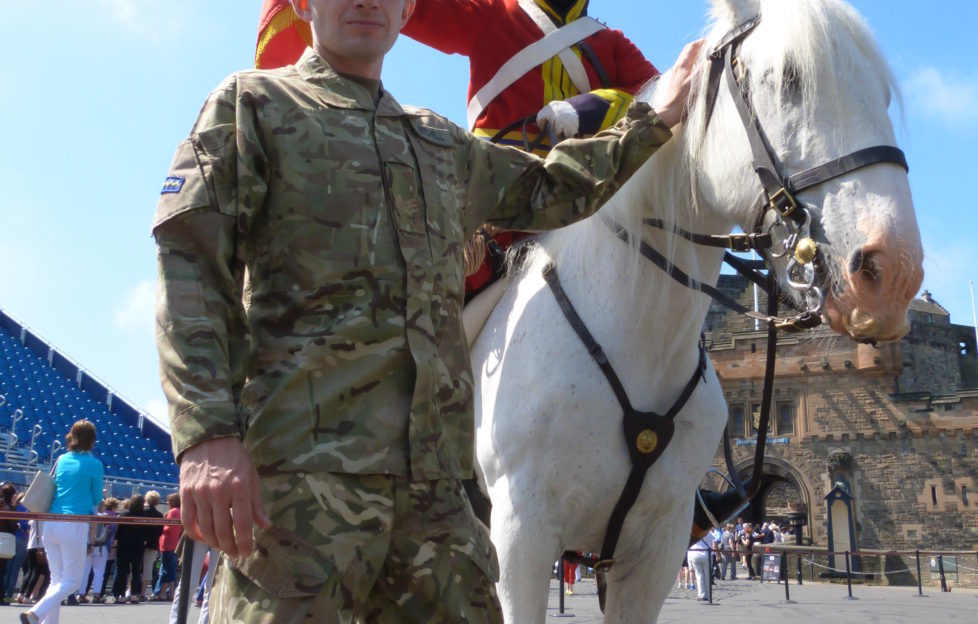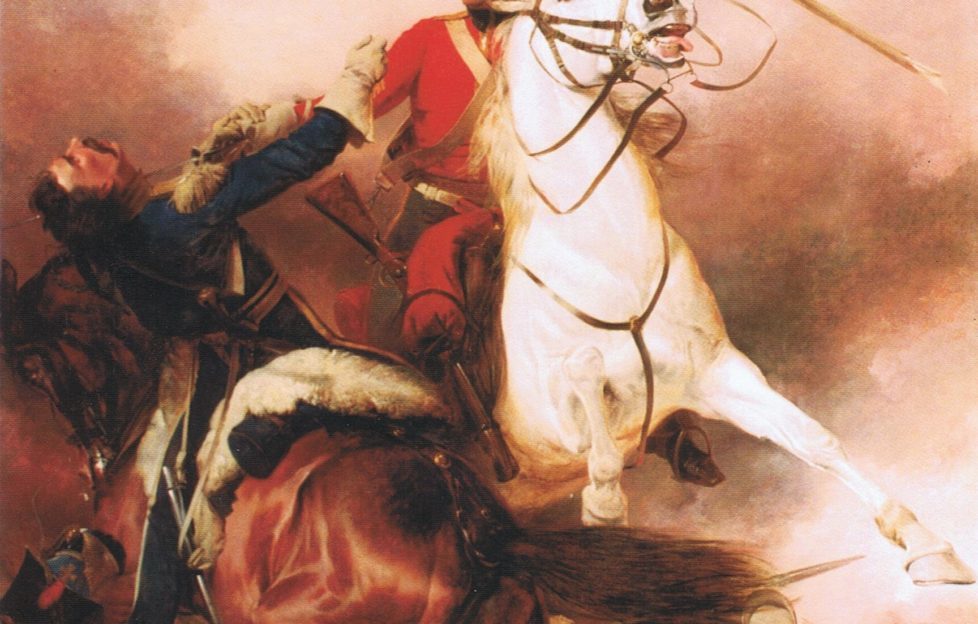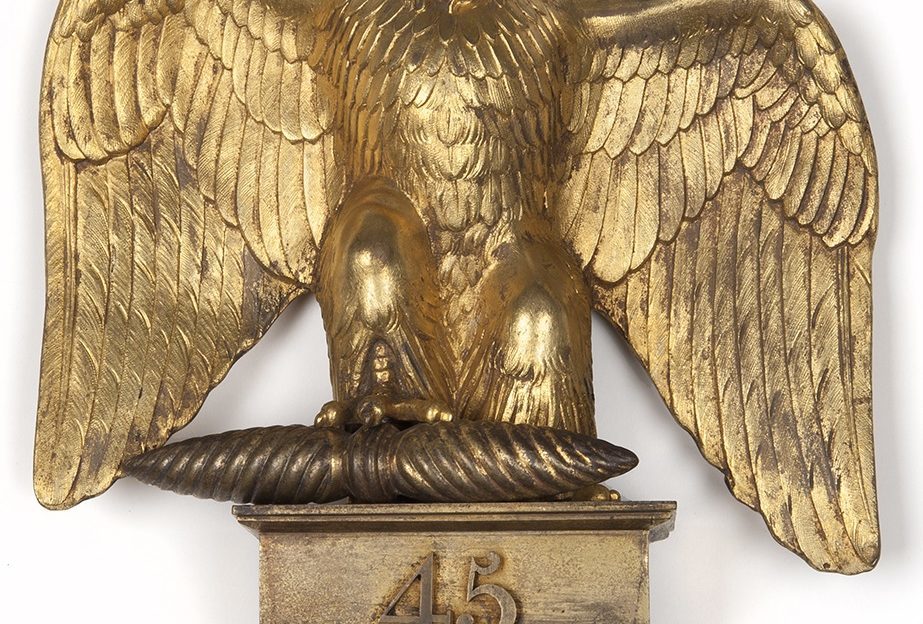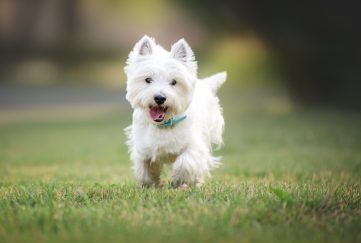Scots At Waterloo
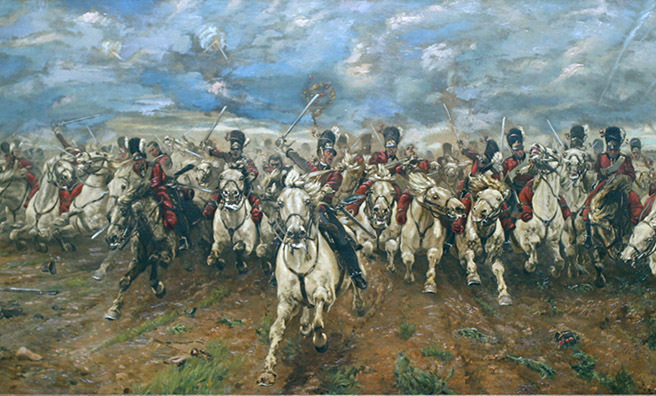
The Royal Scots Greys – now known as The Royal Scots Dragoon Guards – lead Scotland’s programme of events to mark the 200th anniversary of Waterloo
Napoleon called them “Les terrible chevaux gris” as he witnessed the might of the Royal Scots Greys being unleashed onto the battlefield of Waterloo in one of the most important cavalry charges in history.
On June 18, 1815, the Scottish cavalry’s 400 grey horses thundered towards the French forces, spearheading the Duke of Wellington’s Anglo-Allied army’s victory against Emperor Napoleon.
But the heroic actions of the Scots came at a cost with 200 men and 224 horses from The Greys falling in battle, either killed or wounded.
One of the most important cavalry charges in history
Now Scotland’s cavalry is preparing to commemorate the heroic charge that struck a thunderbolt into the heart of Napoleon’s legions and helped halt his bid for dictatorial dominance in Europe.
Brigadier Mel Jameson, chairman of the Royal Scots Dragoon Guards Waterloo 200 Scottish committee detailed the planned commemoration programme for Scotland.
“The heroic actions of the Scottish cavalry who fought, died and prevailed on the field of Waterloo still resonate with our soldiers of today,” he explained. “It is important that their sacrifice and valiant deeds should still be remembered even 200 years after their decisive actions.
“Waterloo is the main Battle Honour of The Royal Scots Dragoon Guards and the regiment marks the victory and honours the human cost on June 18 every year.”
“The bloody battlefields of Belgium are very much in everyone’s mind as the nation marks the anniversary of key battles in World War One,” he added, “but a century earlier our soldiers were fighting for their lives on those same fields at Waterloo. We will be marking their sacrifice and celebrating their victory in a series of events both in Scotland and Belgium during June.”
To commemorate the efforts of the Scots at Waterloo, the Greys are being mustered to ride again.
A specially created and trained Waterloo Squadron troop of grey horses and riders will bring Scotland’s history alive as they take the tale of Waterloo on parade behind marching bands and pipes and drums through Edinburgh, Kilmarnock and Jedburgh.
Heroes – past and present
Brigadier Jameson explained how Waterloo also gave Scotland a true hero – Sergeant Charles Ewart from Kilmarnock who fought against four-to-one odds to seize the French Imperial Eagle standard of the 45th Infantry – Napoleon’s “Invincibles” – during the heat of battle.
“He was one hero among hundreds but his actions made him a legend, feted by the whole country,” he said. “He fought for his comrades, his regiment and his country and the cap badge worn by Scots cavalrymen of today still features the captured French Imperial Eagle.”
Brigadier Jameson drew parallels between Ewart’s actions and the heroism shown by 21st century Royal Scots Dragoon Guards hero Sergeant Keith Mitchell from Glasgow who was awarded the Military Cross for outstanding bravery in Afghanistan.
Sgt Mitchell, whose citation detailed “bravery of the very highest order”, said:
“No soldier ever considers himself a hero. We go into action determined to get the job done and protect ourselves and our comrades in the process.”
Along with other Scottish and British units linked to the 1815 battle, the troop of Greys will also be depicted in the re-enactment of the famous Union Brigade charge at Waterloo during commemorations at the battlefield in Belgium.
- Current day hero Sgt Keith Mitchell MC with a re-enactor posing as Sgt Ewart
- Painting of Ewart after seizing the standard
- The French Imperial Eagle of the 45th Infantry captured by Ewart at Waterloo
Key Events
June 20
Parade and concert in Sgt Ewart’s hometown of Kilmarnock
June 27
The Greys take centre stage at the Royal Mile parade, Edinburgh
June 28
Pageantry, music and fireworks at the Wellington Memorial nr Jedburgh
Click here for more information on the events
Did you know?
Our June issue features a very special Waterloo commemoration piece, featuring a report of the battle written by the Duke of Wellington himself.
His report was first published in our magazine in September, 1815, and the coverage included a copy of the official plan of the battle.
You can see it in our June issue – still available digitally on Readly, or through our website.


